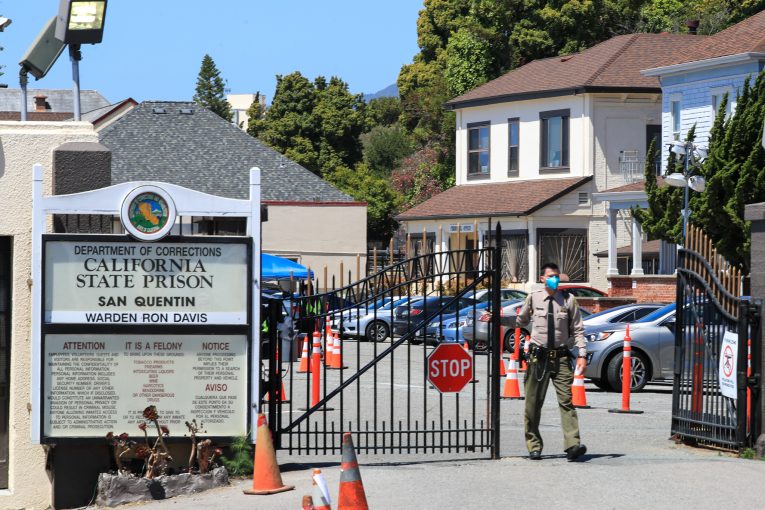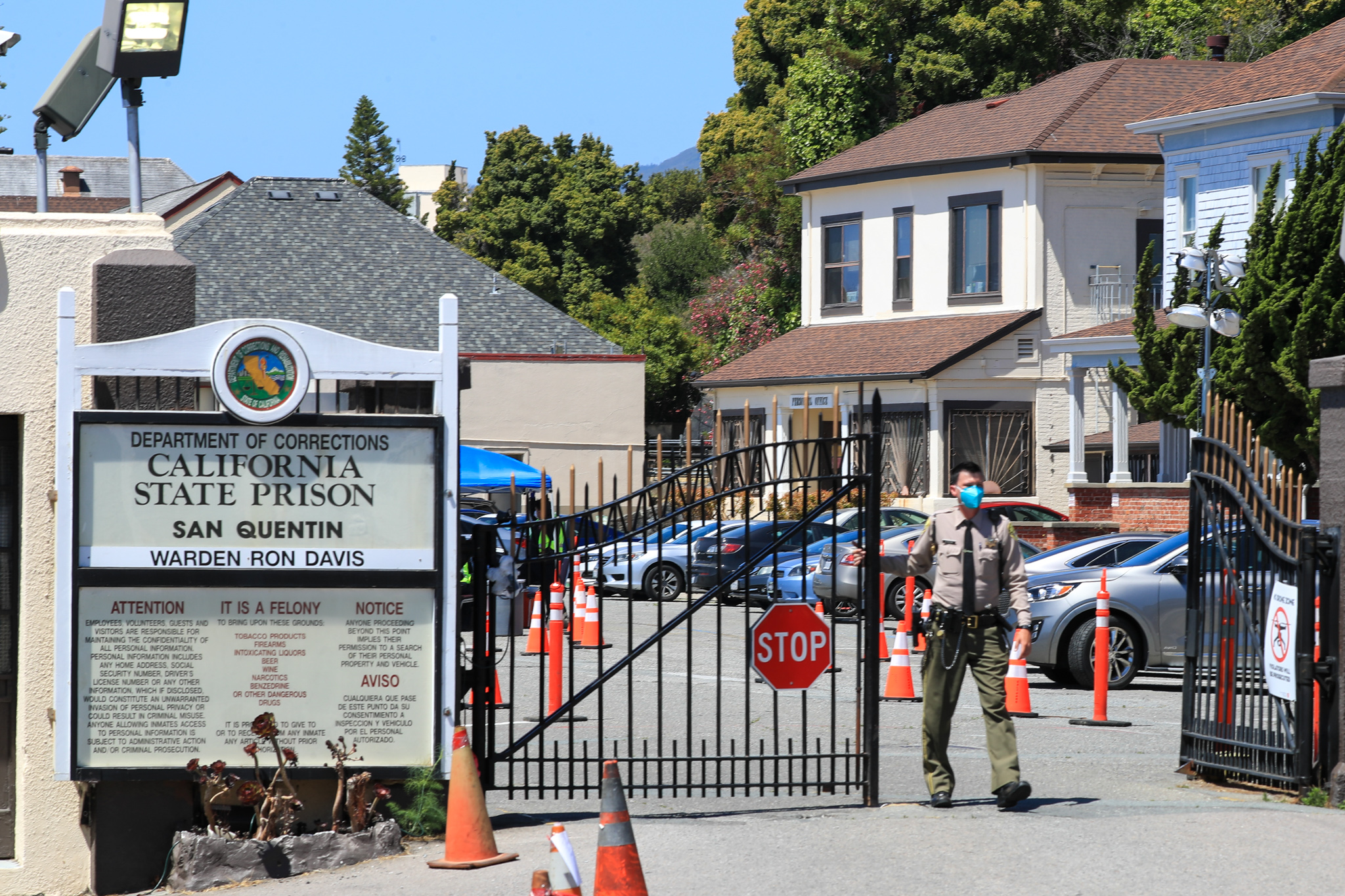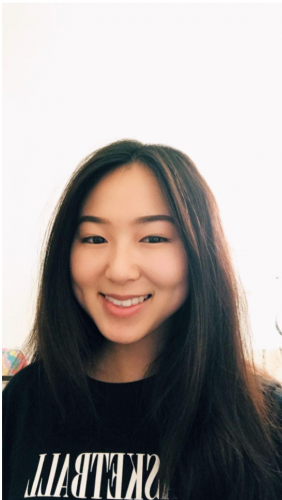
 By Ned Meiners, Kelly Xiao Luo and Alexander Ramirez
By Ned Meiners, Kelly Xiao Luo and Alexander Ramirez
MARIN, CA – It was a busy day for the San Quentin Prison hearings in Marin County Superior Court Wednesday—four prison officials testified about conditions inside the prison during a COVID-19 outbreak last summer.
San Quentin is currently being sued by over 300 inmates, who claim their treatment during the outbreak amounted to “cruel and unusual punishment.”
It was the second day of questioning for Nicole Avila, the Healthcare Associate Warden of San Quentin. Attorney Andrew Gibson began by asking her about present conditions at the prison.
The prison has been in phase 3 of reopening since the beginning of May, which is the least restrictive level of quarantine. This is the first time they have been at this level since the pandemic began.
In Avila’s opinion there is currently enough space to maintain social distancing at the prison. The current population at San Quentin is 2,421 inmates compared with 4,023 in March 2020 before the pandemic began.
According to the Healthcare Warden, if there was an outbreak today at San Quentin there would be space to isolate all the necessary patients in the adjustment center and medical facility, with additional space available in areas such as the chapel and gymnasium.
Currently the priority of the prison is, in Avila’s words, to “[g]et the inmates back to the yard, get the inmates back to school, get the inmates back to work, have them eating in the dining halls.”
However, when cross-examined by Charles Cabone, attorney for the petitioners suing, Avila seemed less certain, admitting she could not recall reviewing CDC guidelines related to COVID-19 in carceral settings.
She stated the Incident Command Post would have made these in regard to masking and testing, and she herself was not setting healthcare policy at the facility. She had only held her title for a matter of months.
Avila also mentioned that in spite of social distancing protocols, there were challenges in maintaining social distance in “high traffic areas” such as phone banks, pill lines and hallways.
Carbone noted that Cal OSHA had fined San Quentin “tens of thousands of dollars” for workplace violations in the dental unit at San Quentin. In response the dental unit was required to close the doors of their facility while performing dentistry.
When asked if they were still in compliance with this policy, Avila was unsure of this as well.
Carbone also asked Avila if she had seen and read a report from the Office of Inspector General issued in November 2020. The OIP found in 25 percent of cases proper screening procedures were not followed and screeners received little to no training.
When asked if the prison had changed procedures as a result of the report, Avila responded, “I cannot recall.”
The next witness was Kyle Cox, the San Quentin Correctional Plant Manager, who oversees all the maintenance at the facility. This includes being responsible for all the air circulation and ventilation for the facility.
Each housing unit in San Quentin has a window unit which draws in air from outside and is then circulated throughout the unit by a large fan. Each cell then has an individual exhaust unit to push air out of the facility.
However, when pressed about the age of the units in questions, Cox could not tell how old the system was.
According to Cox, the system is subject to “preventative maintenance.” Once a month staff change filters and perform work on the fans to make sure they are fully functional. The facility uses MERV-13 filters, which, according to the plant manager, are a better grade than your average filter.
Cox is relatively new at his position as well; it was only in September 2020 that he assumed direct supervision over the ventilation. Prior to this he supervised building trades such as carpentry, although he was “helping to get the filters in” when they were installed during quarantine.
Although Cox believed the filters used at San Quentin are above average, Attorney Jennifer Huber stated MERV-13 filters are not HEPA compliant. According to the attorney they only trap 75 percent of air particles and could not trap a virus.
Cox was unaware of this, adding there are no plans to upgrade or improve the ventilation at the facility.
The final witness of the morning was William Stanton, a sergeant working in the adjustment center at San Quentin. The adjustment center is where individuals who have tested positive for COVID-19 are kept in medical isolation.
Stanton described the inmates kept at the adjustment center as having “access to services.” This includes access to the phone, the yard, canteen, their property, including televisions, and packages, but not to any programs outside the adjustment center.
Inmates at the adjustment center also have access to the outside recreation area. The yard is adjacent to the building and has 36 open air cells which they have access to for four hours three times a week.
Stanton explained that the isolation cells in the adjustment center were disinfected and inmates are supplied with necessary PPE, but inmates typically bring their own linens and clothes.
Attorney for the petitioners, Khari Tillery, cross-examined the sergeant. “The adjustment center is typically used for prison discipline, correct?” began the attorney’s questioning.
Stanton responded that it had in the past, but had been converted to a medical facility in June of 2020.
When asked if it housed dangerous inmates, Stanton responded, “We treat all inmates dangerously because they are all capable of doing whatever they did to get incarcerated…We treat them all the same whether they are in the AC or not.”
However, he acknowledged the unit had been designed for solitary confinement and previously held inmates with death sentences.
When Khari asked, “Have you ever heard the phrase prison within a prison to describe the adjustment center?” Stanton said he had. Even staff who are on duty in facility are locked inside for the duration of their shift and must be let out from the outside.
There is not a single staff cohort who work in the adjustment center. According to Stanton, “They are able to work other places, as well as overtime…We call them swaps, but they work other people’s shifts and they would in turn work their shifts at a later date.”
He further acknowledged that an officer could work in the unit with COVID-19 positive patients one day and then in a different unit the next day.
The inmates hardly leave the facility during their isolation quarantine in the adjustment Center. Medical care is given in the facility. They shower in the facility three times a week. There may be days when they are not let out of their cell at all, he said.
Three days a week for four hours, there is some time in which inmates can be in the yard. During this time, the inmates are held individually in 36 outdoor cages.
When Tillery asked if he knew whether the name adjustment center had anything to do with “an attitude adjustment,” Stanton replied that he did not.
Attorney Andrew Gibson questioned Daryl Dorsey, the facility captain of H unit and the security captain of three other units in the San Quentin State Prison.
Dorsey began by explaining the hygienic system which is operated and enforced in the housing unit for inmates, to which he stated that the dorms in San Quentin are cleaned three times during one interval and three more times in another time interval, all done seven days a week.
Dorsey explained the system, thoroughly ensuring that it adheres to COVID-19 health and sanitary protocols and living conditions.
Gibson listened carefully, and then asked Dorsey when was the last time he observed an inmate not wearing their mask all day, during his shift.
To that Dorsey responded directly “two to three months ago” and he also added that he made an on-the-spot correction to the inmate and provided instructions on how to properly wear a mask.
Gibson also followed up on Dorsey’s response with another question asking when was the last time he’s personally observed a staff member in San Quentin without a mask all day, and Dorsey responded “I have not.”
“Okay. Let’s assume that there were, what actions would be taken?” Gibson added. Dorsey responded similarly that if there were such a case and it is a staff member, not an inmate, he’d have made a correction to them, provided clear instructions on efficient mask covering.
But the only difference now is that the staff member’s name will be recorded down on a log for breaking COVID-19 protocols and he would pass the record down to the employment offices to be identified as “deficient.”
Gibson pressed further on the protocols taken to ensure the health and safety of the inmates at San Quentin.
Dorsey reassured that they are taking measures in encouraging mask wearing for staff and inmates by putting up posters in the halls and hosting info sessions on the importance of following mask mandates and social distancing in order to better educate the risks.
During the whole process of questioning, Gibson managed to get some clear statements from Dorsey in regard to the health and safety of the inmates and the housing conditions which San Quentin State Prison operates on.
Dorsey said that, prior to May 2021, inmates were not permitted to interact with each other.
He explained that “each inmate is assigned to a specific unit, and will be served meals in the assigned dorms, yard time will only consist of only one specific dorm at a time, common showers only for those in the same unit, and they will be escorted to appointments as a group with peers from same assigned dorms.”
Questions were also raised about three other units which Dorsey also had responsibility for as the assigned security captain.
Shortly after coming back from afternoon recess, Attorney Gibson called Mike Pedersen of the Healthcare Services Administration in the San Quentin State Prison.
Pedersen is also the former Chief Executive Officer and former Chief Support Executive of the San Quentin facility, and has served his current position of Healthcare Services Administration for two years now.
Under his current position, he explained that he takes care of anything that does not have an executive over it. This includes working at the lab, radiology, health records, dialysis, the warehouse, and anything but dental, nursing, and medical and mental health.
He is also a subject matter expert for the Electronic Healthcare System, San Quentin’s digital healthcare system, which was the next point that Gibson delved into in questioning.
It was at this point that Gibson brought forth a couple exhibits of medical documents for Pedersen to identify and for submission.
The document was entitled “Progress Notes,” and it details when a patient is seen by a doctor. These documents are not only mandatory, but also essential for the California Correctional Health Care Services.
“It is vital to healthcare, and the records system. And to ensure that all information is documented in the appropriate manner,” he said.
So important are these documents that there is an automatic date placed for when the document is first created, and there is a two-tier system for inputting these documents that involves the user’s identification and password.
Pedersen continued to talk about his being in charge of vaccination at the San Quentin facility and what he knew about the rates of vaccination between the staff and inmates at the facility.
According to Pedersen, every patient was offered both the Moderna and the Johnson and Johnson vaccine. 79 percent of the inmates were fully vaccinated and 55 percent of the staff were fully vaccinated, but the staff percentage does not include the staff who got vaccinated at an offsite location, so this percentage may be higher.
Pedersen estimated that this is about 1,500 inmates, and no specific number was given for the staff percentage. As for the people who rejected taking the vaccine, there are teams present in San Quentin that aim to address the concerns that the inmates may have with the vaccine.
Other than the previously mentioned teams in San Quentin, there are also healthcare service requests that inmates can send to a nurse, which also have the same two-tiered protection that the Progress Notes documents had as well.
Gibson would continue to ask about screening and cleaning and what San Quentin has done or been doing. Pedersen explained that anybody who comes on site is getting screened.
Although screening was originally being done at the pedestrian gate only, this was eventually expanded to include the staff, inmates and anyone else coming onto the facility.
Also, if any staff were to start feeling any symptoms that they may believe to be the virus, they were instructed to stay home. As for the cleaning of the facility, this is being done twice every day, unless there was an outbreak in which case the facility would switch to what Pedersen called “terminal cleaning.”
This just means that the area in which a cohort is present is immediately cleaned after the cohort leaves. Since there has not been an active case in over 100 days, the cleaning schedule will stay at twice a day.
Mike Pedersen will continue testimony Thursday.
 Ned Meiners is a Legal Studies student at City College San Francisco. Originally from Maine, he currently resides on Bernal Hill in San Francisco.
Ned Meiners is a Legal Studies student at City College San Francisco. Originally from Maine, he currently resides on Bernal Hill in San Francisco.
 Hello, my name is Kelly and I am an upcoming senior transfer student from UC Davis. I am currently pursuing a Bachelor’s degree in the study of Sociology w/ Law Emphasis. My interests are mainly listening to podcasts on social issues, criminal justice, mythology etc. During my free time, I volunteer as a foster for our school’s vet program and I paint.
Hello, my name is Kelly and I am an upcoming senior transfer student from UC Davis. I am currently pursuing a Bachelor’s degree in the study of Sociology w/ Law Emphasis. My interests are mainly listening to podcasts on social issues, criminal justice, mythology etc. During my free time, I volunteer as a foster for our school’s vet program and I paint.
 Alexander Ramirez is a third-year Political Science major at the University of California, Davis. He hopes to hone his writing skills in preparation for the inevitable time of graduation.
Alexander Ramirez is a third-year Political Science major at the University of California, Davis. He hopes to hone his writing skills in preparation for the inevitable time of graduation.
To sign up for our new newsletter – Everyday Injustice – https://tinyurl.com/yyultcf9
Support our work – to become a sustaining at $5 – $10- $25 per month hit the link: